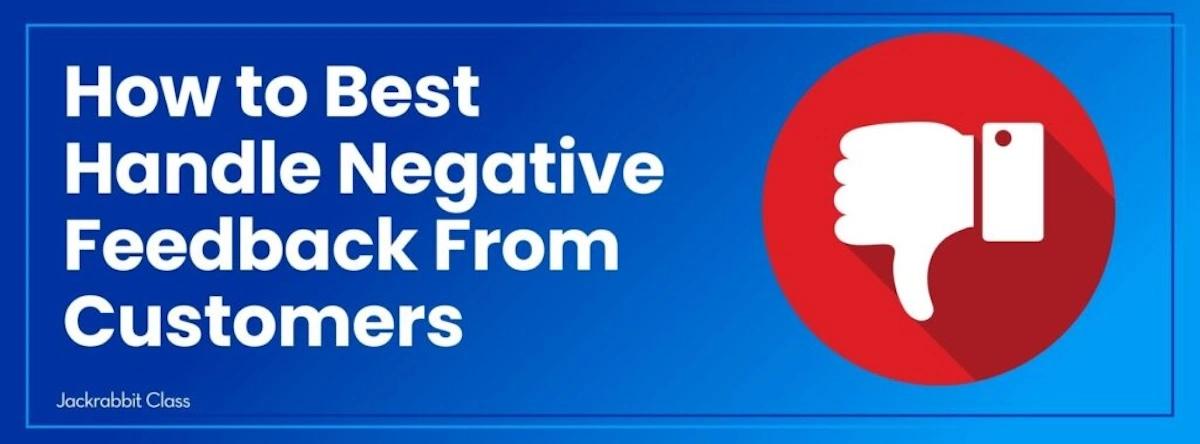You’ve put the work in to make sure your staff is trained and your customer experience is the best it can be, but despite it all, you still received some negative feedback in a review. We get it, it can seem a little unfair. Unfortunately, you can’t please every parent and even though you’ve worked hard to create a great customer experience, you will occasionally receive negative feedback about your business. It’s an inevitable reality, but getting bad feedback isn’t the end of the world! It all comes down to your reaction and the steps you take afterward.
Why You Need to Handle Negative Customer Feedback Effectively
While it’s important to learn how to handle negative customer feedback, it’s also important to know that you can’t fix everything. The reality is that some customers won’t like your business and that’s ok.
Customer reviews are important for any youth activity center, but customer service is even more important. According to a Zendesk survey on the impact of customer reviews and service, service has a greater impact on revenue than reviews. Participants ranked customer service as the number one factor driving their consumer choices, such as enrolling a child in an extracurricular activity. Over half of the customers surveyed stopped buying from a company after they received poor service, and 69% of respondents stated that receiving a quick resolution to their problems was what constituted good customer service.
Negative experiences are remembered longer than positive ones and they are shared more often on social media. The good news is that when negative feedback is addressed appropriately, customers leave with a positive experience. Negative feedback on its own doesn’t harm business – not knowing how to handle negative feedback does.
Let’s take a more in-depth look at ways to handle negative customer feedback and turn it into something positive for your business.
5 Ways to Handle Negative Customer Feedback
Listen and Understand
Hearing negative feedback is uncomfortable, but as we’ve mentioned before, communication is an important part of the customer experience. Listen carefully to what they’re saying and make sure you understand the issue. It’s important to make sure you hear out the customer’s concerns. Rephrase their concerns and ask open-ended questions to gain a better understanding of the issue. If the feedback came in from a review, try to reach out to learn more about the problem. The more information you have, the easier it will be to fix the problem.
Receiving Feedback Online
Online reviews are a double-edged sword. They can dramatically increase your customer base when they’re positive, but negative reviews can paint a negative light on your business. The tough part about online reviews is they often express frustration without highlighting an actual problem. Comments like “worst service ever” or “terrible experience” don’t actually outline a problem that can be solved. So, how do you handle this type of negative feedback?
Separate Your Emotions
While the customer may be emotional, it’s important that you aren’t. Not many people can deliver negative feedback in a way that makes the recipient comfortable. If you can separate the feedback from the emotion, it will be easier to respond professionally. Two things to keep in mind are:
- Don’t get defensive
- Don’t take it personally
Negative feedback is an opportunity to improve on something, so try and accept it with gratitude.
Put Yourself in the Customer’s Shoes
To gain a greater understanding of your customer’s feelings, you’ll need to be able to see things from their point of view. Showing empathy is a critical component of making others feel heard. If your customer can see that their feedback is valued, it will help defuse any anger or negative feelings that are being expressed. Now you are in a position to solve the problem.
Apologize and Work Toward a Solution
Regardless of whether you are personally responsible for the issue being presented, take responsibility and come up with a plan to address it. Apologize to the customer, but don’t over-apologize. Say you are sorry that this has happened and then take steps to fix the problem.
Change Your Perspective
View negative feedback as constructive criticism. Your customers may be posting complaints about your business, but they care enough to do so. They are engaging with you, so take the opportunity to engage back. Respond promptly and thoroughly, without an emotional reaction.
Keep in mind that reviews posted on public sites allow your response to be visible to anyone. This can be a good thing, but it means you must choose your words carefully. Take the time to let the reviewer know that you appreciate the feedback, acknowledge their complaint, and be respectful. If you are able to directly address the problem, do so, and let the customer know in your response. At a minimum, let your customers know that you are listening and acknowledging what they have to say.
Resolve the Problem
If possible, develop an action plan to prevent the same issue from occurring in the future. If it’s appropriate, you may choose to offer something to the customer such as a gift card, a free class, free shipping, or a discount, depending on the nature of your business.
The “5 Whys” technique is a great way to explore the causes behind a problem. Here’s an example:
Problem: Gymnastics class started 20 minutes late because the instructor was not present.
- Why? – It was snowing outside causing poor road conditions.
- Why? – It took longer than usual for the instructor to get to work.
- Why? – The instructor did not account for the road conditions and did not leave extra time.
- Why? – The instructor regularly “pushes the clock” and barely makes class on time.
- Why? – Possible time management issues.
The above situation is a simple one, but it can easily result in negative feedback. While these types of situations happen, addressing them immediately and planning to avoid a recurrence in the future will go a long way toward saving your customer service reputation.
Every business is going to receive negative customer feedback at some point. Knowing how to handle it effectively can make a big difference in how this feedback affects your business. By listening to your customers, taking responsibility, and finding solutions, you can positively impact your customer service and improve your business at the same time.
The key is making sure unhappy customers are heard and their concerns are acknowledged. Addressing negative feedback appropriately gives you a chance to show you care about customer service and satisfaction.
Want to do more to cut back on negative feedback? Sign-up for our newsletter to see how Jackrabbit Class can improve customer experience at your youth activity center!














